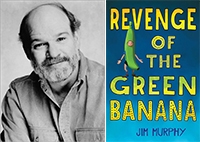In marked contrast to the clipped, suspenseful pace of his Inside the Alamo
(reviewed above), Murphy here adopts a leisurely, lyrical tone to chronicle the invisible spread of the deadly disease that not only crippled Philadelphia (then the temporary capital of the U.S.) but also set off a constitutional crisis. The author evokes the stifling August heat as well as the boiling controversy surrounding President Washington's decision not to support the French in the war against Britain. The residents, so distracted by the controversy, did not take note of the rising numbers of dead animals lying in open "sinks," or sewers; swarms of insects festering, and a growing population of ill citizens climbing until the church bells tolled grim news of death almost constantly. Murphy injects the events with immediacy through his profiles of key players, such as local doctors who engaged in fierce debates as to the cause, treatment and nature of the "unmerciful enemy"—among them the famous Benjamin Rush. The text documents many acts of heroism, including the Free African Society's contributions of food, medicine and home care: the Society was rewarded afterwards only with injustice. Archival photographs and facsimiles of documents bring the story to life, and a list of further reading points those interested in learning more in the right direction. This comprehensive history of the outbreak and its aftermath lays out the disputes within the medical community and, as there is still no cure, offers a cautionary note. Ages 10-14. (Apr.)


